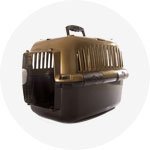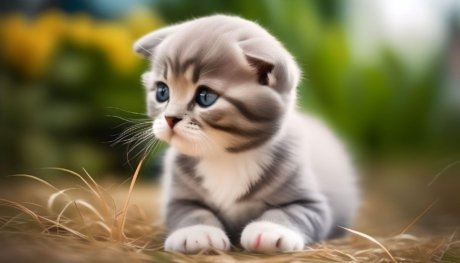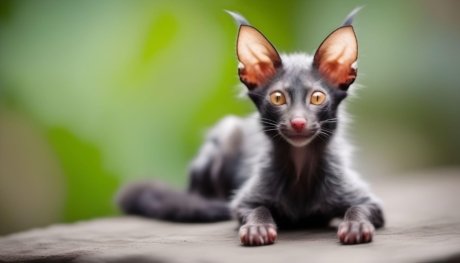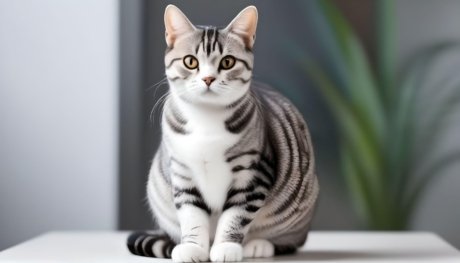Persian Cats | Breed Information, Prices, Monthly Cost, Facts, Care Tips
Welcome to our comprehensive guide on Persian cats! If you’re considering bringing one of these beautiful felines into your home, or simply want to learn more about them, you’ve come to the right place. Persian cats are a popular breed known for their long, luxurious coats and sweet personalities. In this guide, we’ll cover everything from the history of Persian cats to their care and maintenance, health issues, and more. So, let’s dive in and discover all you need to know about these lovely creatures!
Persian Cats
The Persian cat is a popular cat breed that is known for its long, silky coat and friendly personality. For ages, people have kept these cats as pets, and they are still a favourite among cat enthusiasts today.

The Persian cat’s thick, fluffy coat is one of its most distinguishing characteristics. This coat, which comes in a range of hues and patterns, needs frequent maintenance to stay lustrous and free of mats. Grooming Persian cats can be a soothing and joyful bonding experience, thus many Persian cat owners love taking the time to do it.
Persian cats are known for their calm and friendly nature in addition to their stunning coats. They appreciate spending time with their owners and are often seen as being nice and docile. They may be a little more reserved than some other cat breeds, but they are still incredibly social creatures that enjoy interacting with people.
It’s important to realise that Persian cats do need a little extra care and attention if you’re thinking about bringing one into your home. To ensure their health and wellbeing, they may also need special diets and routine veterinarian exams in addition to routine grooming.
Cute Persian Cat
The Persian cat is one of the cutest feline breeds around! With their fluffy coats and adorable faces, it’s no wonder they are so popular among cat lovers.
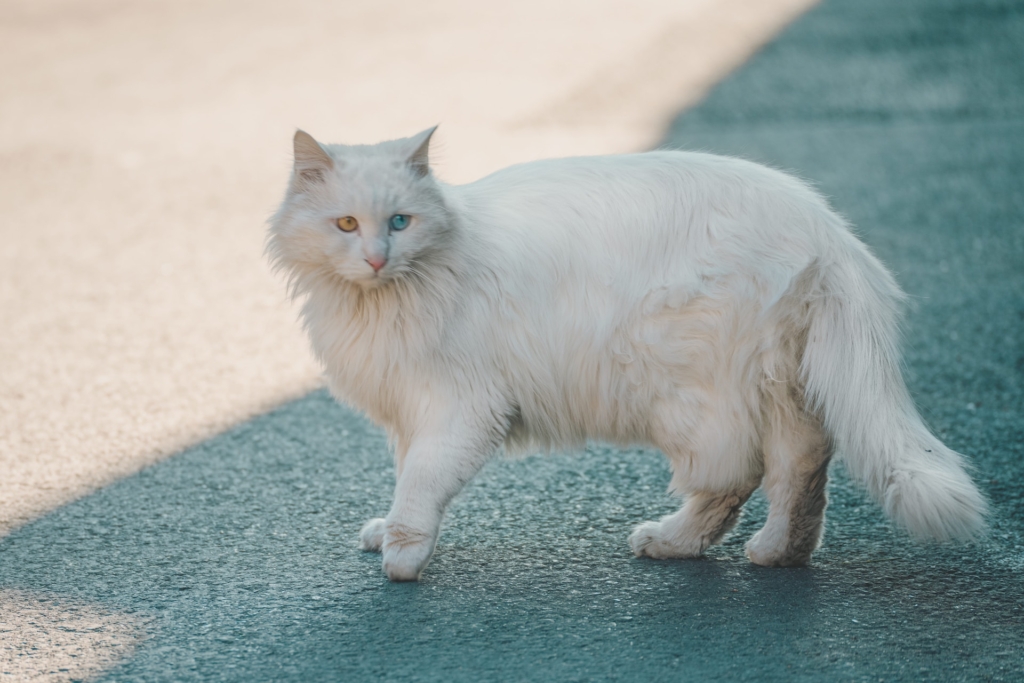
Persian cats come in a variety of colors and patterns, from solid white to black and everything in between. Their coats require regular grooming to keep them looking their best, but many owners find the grooming process to be a bonding experience with their beloved pets.
Aside from their good looks, Persian cats are known for their sweet and affectionate personalities. They enjoy spending time with their owners and are known to be great lap cats. While they may be a bit more laid back than some other breeds, they still love to play and have fun.
If you’re thinking about adding a Persian cat to your family, it’s important to understand that they do require some extra care. Regular grooming, a healthy diet, and regular veterinary check-ups are all necessary to ensure your furry friend stays healthy and happy.
Male Persian Cat
Popular feline breed Persian male cats are sought after for their luxurious coats and endearing personality. It stands to reason that they make wonderful pets for cat lovers everywhere given their attractive appearances and loving personalities.

Persian cats come in a wide range of hues and patterns, but the males are often bigger and more powerful than the females. They are popular for being loving and playful, which makes them an excellent choice for homes with kids or other pets.
Male Persians are often laid-back and easygoing, but they do need regular grooming to maintain the beauty and health of their lengthy coats. Many cat owners find that the grooming procedure is a wonderful opportunity for bonding with their feline friends.
Female Persian Cat
Female Persian cats are a beloved feline breed known for their stunning beauty and sweet dispositions. With their fluffy coats and affectionate personalities, it’s no wonder they make such wonderful pets.
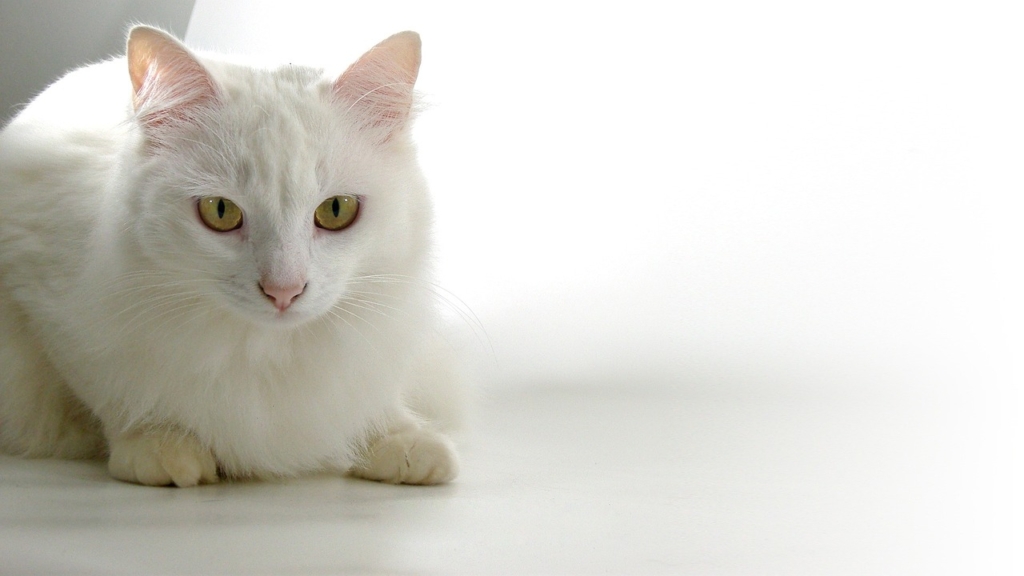
Female Persians come in a variety of colors and patterns, but all share the same signature long and luxurious coat. Regular grooming is a must to keep their coats healthy and free of mats, but many owners find the grooming process to be a relaxing and enjoyable bonding experience with their cats.
Persian Cat Kittens
Persian cat kittens are simply adorable! With their big round eyes, fluffy fur, and playful personalities, it’s easy to see why they are so popular among cat lovers.
When adopting a Persian kitten, it’s important to provide them with a safe and comfortable home. Kittens require plenty of attention and care, including regular feedings and socialization to ensure they grow into happy and healthy adult cats.
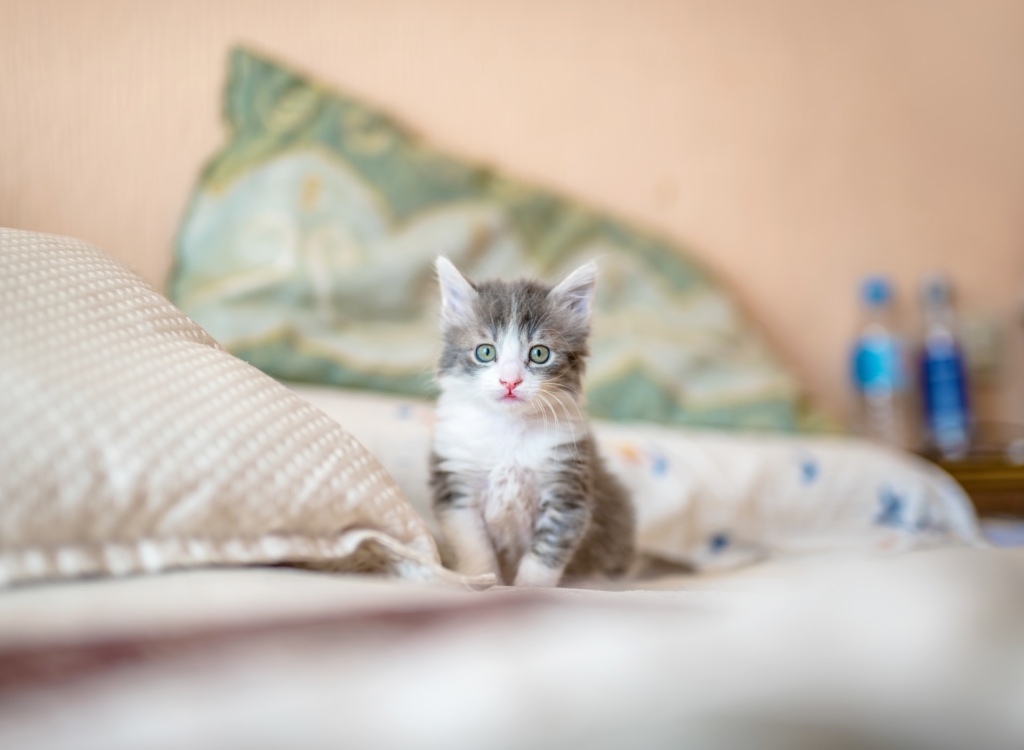
Grooming is also important for Persian kittens, as their long coats require regular brushing to prevent matting and maintain their beautiful appearance. Many owners find that grooming their kittens is a great bonding experience that helps establish a strong relationship with their new furry friend.
Persian kittens are known for their playful and curious natures, but they do require some training to establish good behaviors and habits. Providing plenty of toys and playtime, as well as positive reinforcement for good behavior, can help ensure your kitten grows into a well-behaved and happy adult cat.
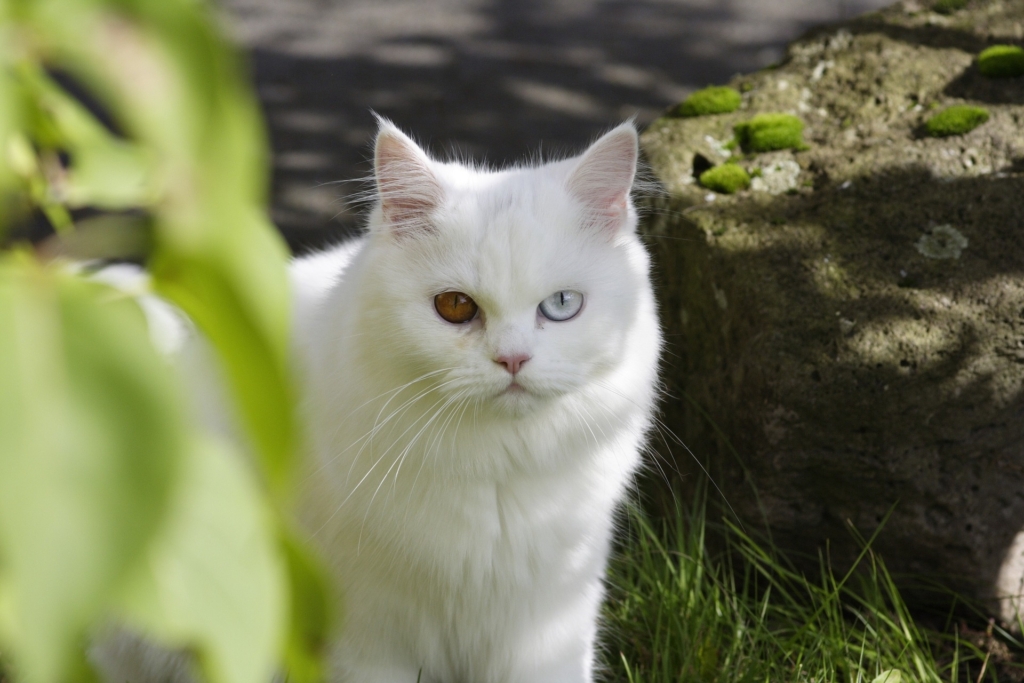
10 Types of Persian Cats
There are several different types of Persian cats, each with their own unique characteristics and appearance. Here are 10 most common types of Persian cats:
1. Himalayan Persian:
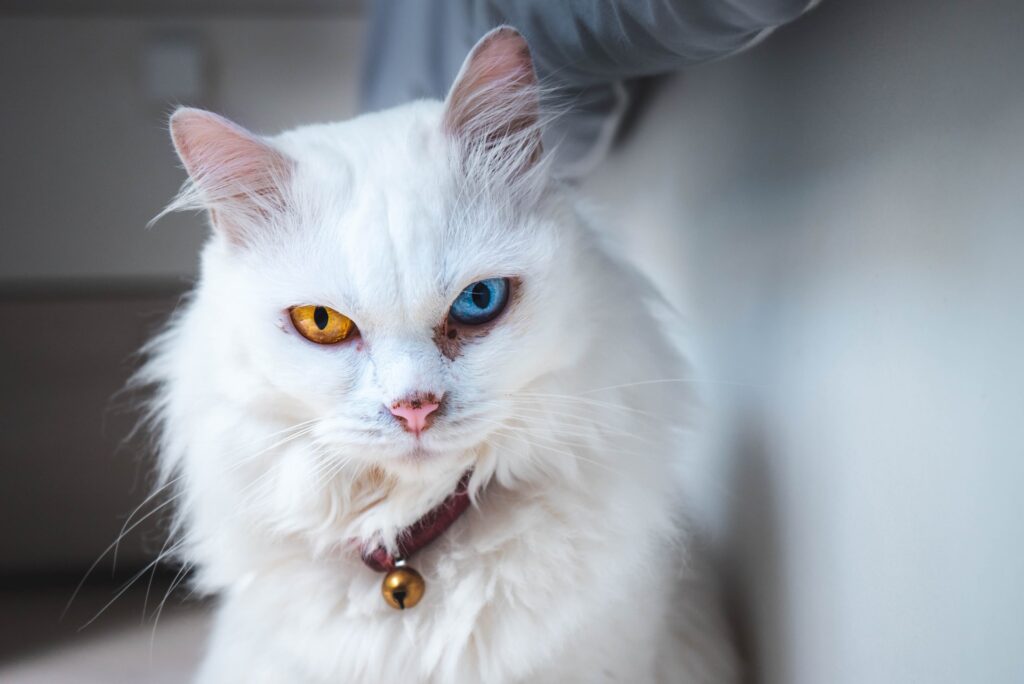
The Himalayan Persian is a cross between a Persian and a Siamese cat. They have the pointed coloring of a Siamese, but with the long hair of a Persian.
2. Exotic Shorthair Persian:

The Exotic Shorthair Persian has the same cute face and round head as a traditional Persian, but with a shorter, more manageable coat.
3. Teacup Persian:

The Teacup Persian is a miniature version of the Persian cat, weighing in at just 4-6 pounds when fully grown.
4. Doll Face Persian Cat

This Doll’s Face A variety of Persian known as the Persian Cat has a less severe facial structure, with a longer nose and less large eyes. Because their fur is long, it must be regularly groomed to maintain it healthy and tangle-free. They make wonderful pets for both people and families.
5. Punch Face Persian Cat

The Punch Face Persian Cat is known for their extreme facial structure, having a flat face and short muzzle. They have long and thick coats that require regular grooming. They are known for their sweet and affectionate personalities.
6. Calico Persian Cat
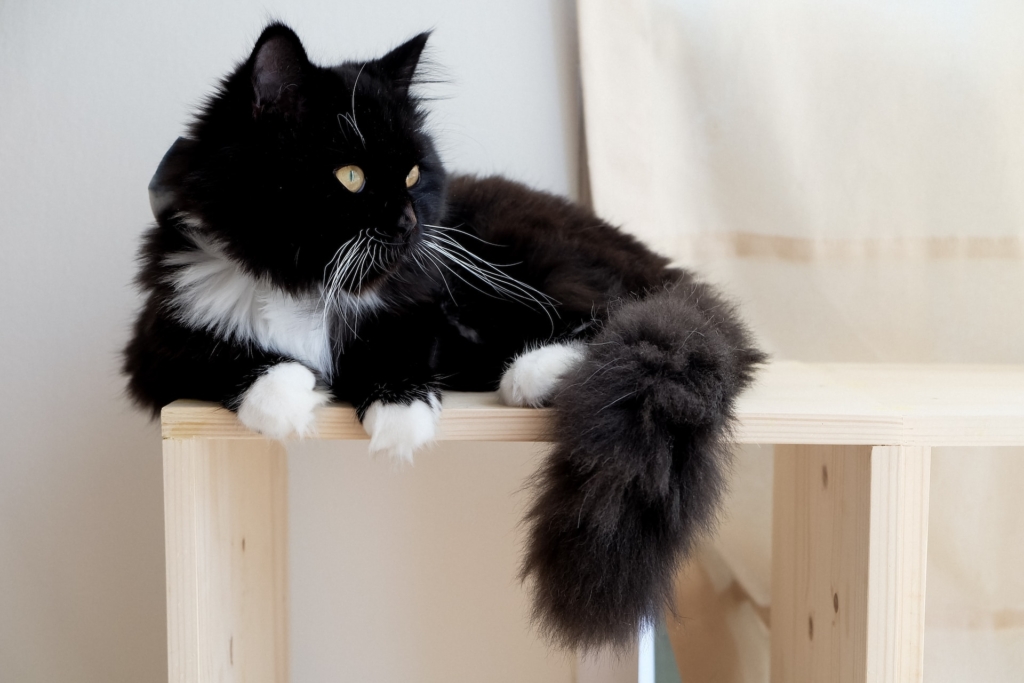
The Calico Persian Cat is a type of Persian with a unique coat pattern of white, black, and orange patches. They have long, luxurious coats that require regular grooming. They are known for being friendly and loving pets.
7. Traditional Persian

The Traditional Persian Cat is a classic breed with a round face and short muzzle. They have long, thick coats that require regular grooming to keep it healthy and tangle-free. They are known for their affectionate and gentle personalities.
8. Extreme Punch Face Persian Cat
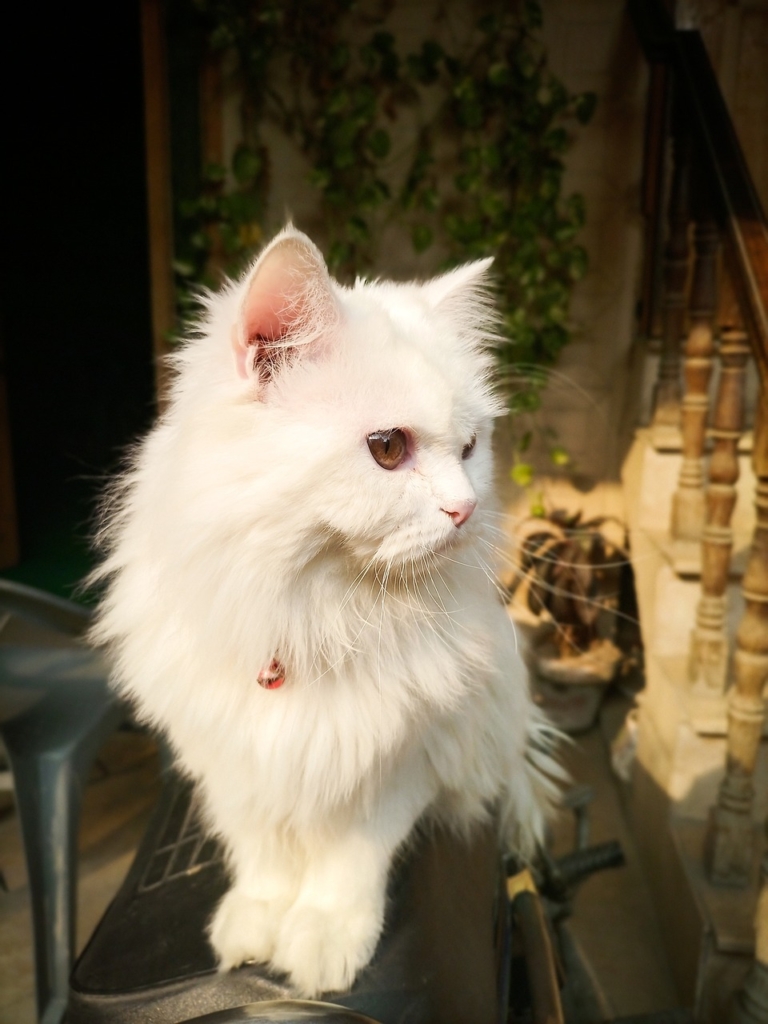
The Extreme Punch Face Persian Cat is a type of Persian with an extremely flat face and short muzzle. They have long, thick coats that require regular grooming. They are known for their calm and laid-back personalities.
9. Ginger Persian Cat
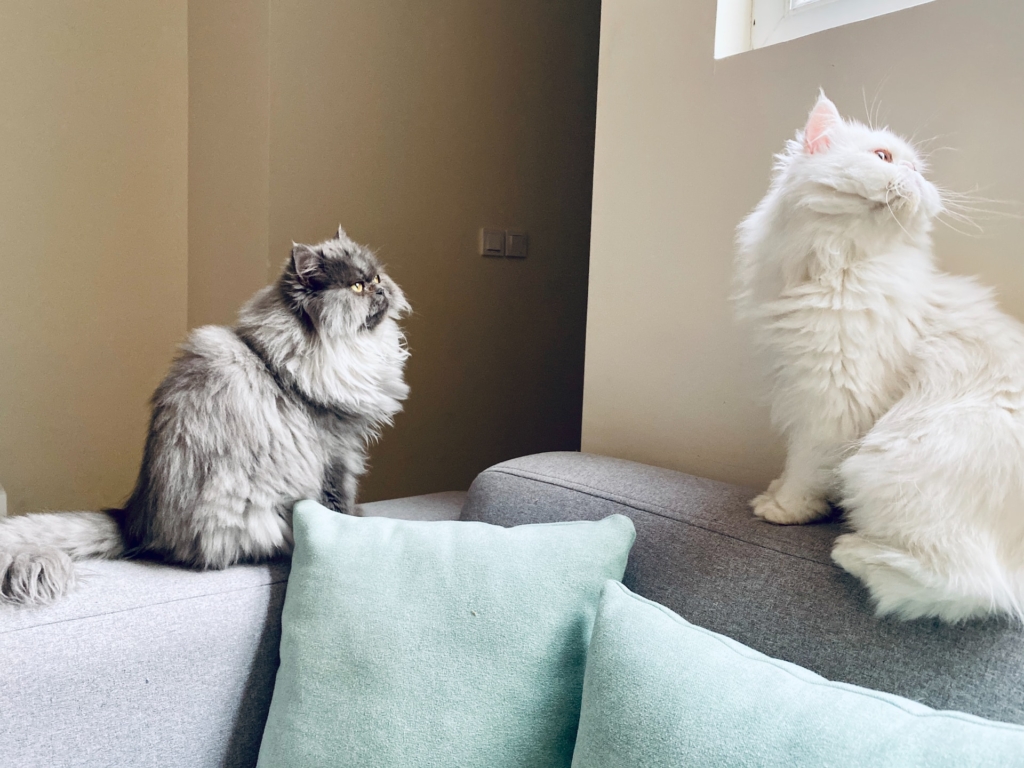
The Ginger Persian Cat is a type of Persian with a beautiful orange coat. They have long, thick coats that require regular grooming. They are known for their affectionate and playful personalities.
10. Triple Coat Persian Cat
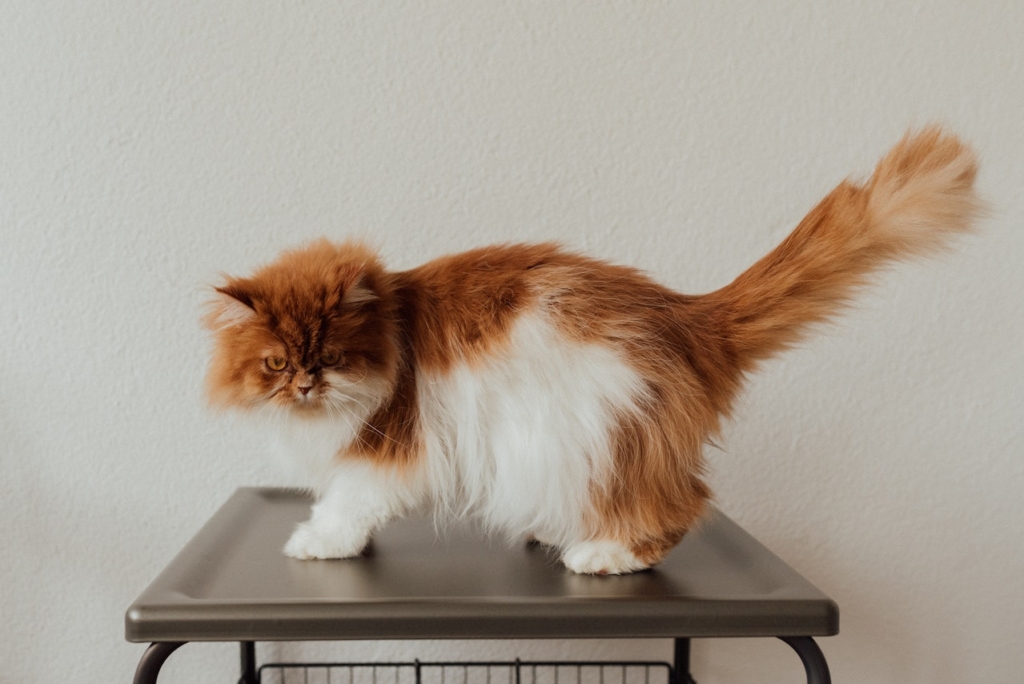
The Triple Coat Persian Cat is a type of Persian with three layers of fur, making their coat extra thick and luxurious. They require regular grooming to keep their coat healthy and tangle-free. They are known for being sweet and loving pets.
Persian Cat Colours
Persian cats are known for their stunning and diverse coat colors. Here are some of the most common Persian cat colors:
Black Persian Cat
The sleek, glossy black coats, brilliant eyes, and loving nature of black Persian cats are well-known characteristics. They are beautiful cats that make excellent pets. They are said to get along well with kids and other animals and have affectionate, calming, and devoted nature.
White Persian Cat
White Persian cats are stunning and beautiful cats with a pure white coat and big, bright eyes. They have sweet and gentle personalities and are known for their calm and affectionate nature. White Persians make great pets and are a popular choice for families.
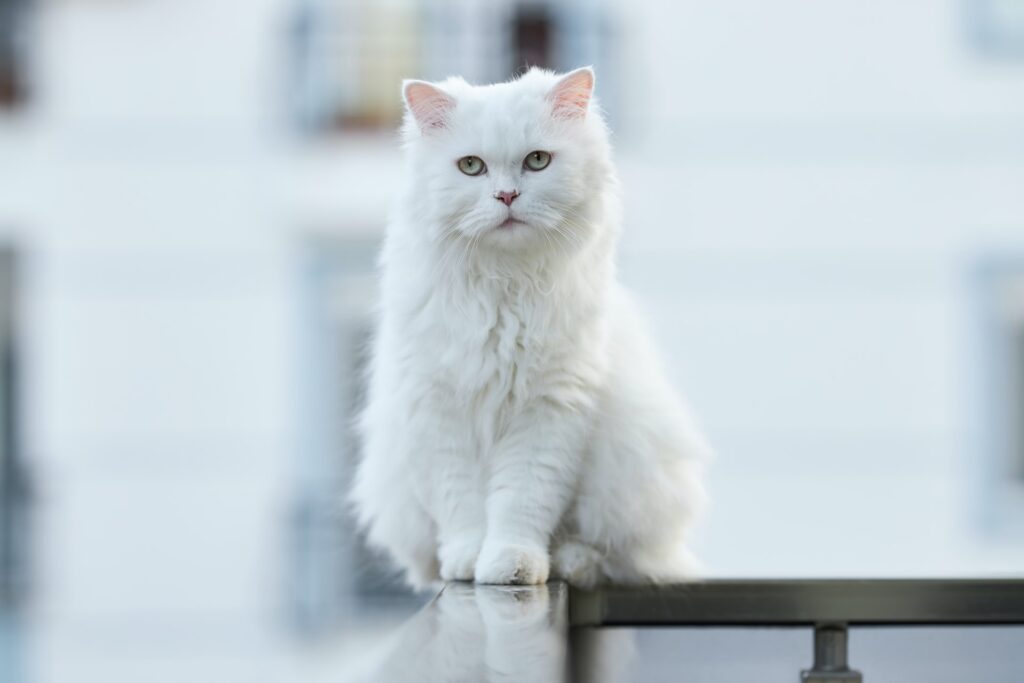
Grey Persian Cat
The Grey Persian cat has a soft, plush coat with a range of shades from light to dark grey. They have big, round eyes and a sweet and affectionate personality. Grey Persians make great pets and are known for their loyal and loving nature.

Blue Persian Cat
The Blue Persian cat has a unique and beautiful coat with a soft, grayish-blue hue. They have big, expressive eyes and a sweet and gentle personality. Blue Persians make great pets and are known for their playful and affectionate nature.

Orange Persian Cat
Orange Persian cats have a warm and vibrant orange coat with big, round eyes and a playful and loving personality. They make great pets and are known for their energetic and affectionate nature.

Golden Persian Cat
Golden Persian cats have a stunning and unique coat with a rich, golden hue. They have big, expressive eyes and a gentle and affectionate personality. Golden Persians make great pets and are known for their loyal and loving nature.

Persian Cat Blue Eyes
Persian cats with blue eyes are stunning and captivating. Their big, bright blue eyes are one of their defining features, along with their soft and luxurious coat. Persian cats with blue eyes make great pets and are known for their sweet and gentle nature.

History of Persian Cats
The Persian cat is an ancient breed with a rich and fascinating history. They are believed to have originated in Persia (modern-day Iran) and were highly valued for their beauty and affectionate nature. The breed was brought to Europe in the 1600s and became popular among royalty and aristocracy. Today, Persian cats are beloved pets all over the world and are known for their sweet personalities and stunning appearance.
Appearance of Persian Cats
Persian cats are known for having beautiful and distinctive looks. They have a charmingly naive aspect thanks to their large, round eyes, small nose, and characteristic flat face. They have luscious, thick fur that is available in a range of colours and patterns. Persian cats move elegantly and regally due to their stocky body and beautiful gait.

Temperament of Persian Cat
Persian cats are known for their sweet and affectionate temperament. They are gentle and calm cats that love to be cuddled and petted. They are loyal and devoted pets that form strong bonds with their owners. Persian cats are also playful and enjoy toys and games, making them great pets for families with children.
Behaviour of Persian Cat
Persian cats are generally well-mannered and easygoing cats. They are not particularly active, preferring to spend their days laying and relaxing. They are indoor cats who don’t need much space or activity. Persian cats are also known for their grooming habits, which necessitate daily brushing to prevent tangles and mats in their fur. They are generally peaceful cats that do not meow excessively or make disruptions, making them suitable apartment pets.

Persian Cat Price
The price of Persian cats varies in the USA and India. In the USA, Persian cats typically range from $500 to $5,000, depending on factors such as lineage, pedigree, and breeder reputation. In India, Persian cat prices can vary widely, with prices ranging from ₹10,000 to ₹50,000.
Persian Cat Price In India
In India, the price of Persian cats can range from INR 10,000 to INR 50,000, depending on the breeder, location, and age of the cat. Show-quality and rare Persian cats can cost even more. It is important to find a reputable breeder to ensure you are getting a healthy and well-cared-for cat.
Persian Cat Price in United States:
In the United States, Persian cat prices can range from $500 to $5,000, with some rare and show-quality Persian cats costing even more. The price can also vary depending on the breeder, location, and age of the cat.
Persian Cat Price in United Kingdom:
In the United Kingdom, Persian cat prices can range from £500 to £1,500, with some show-quality Persian cats costing upwards of £3,000. Again, the price can vary depending on the breeder, location, and age of the cat.
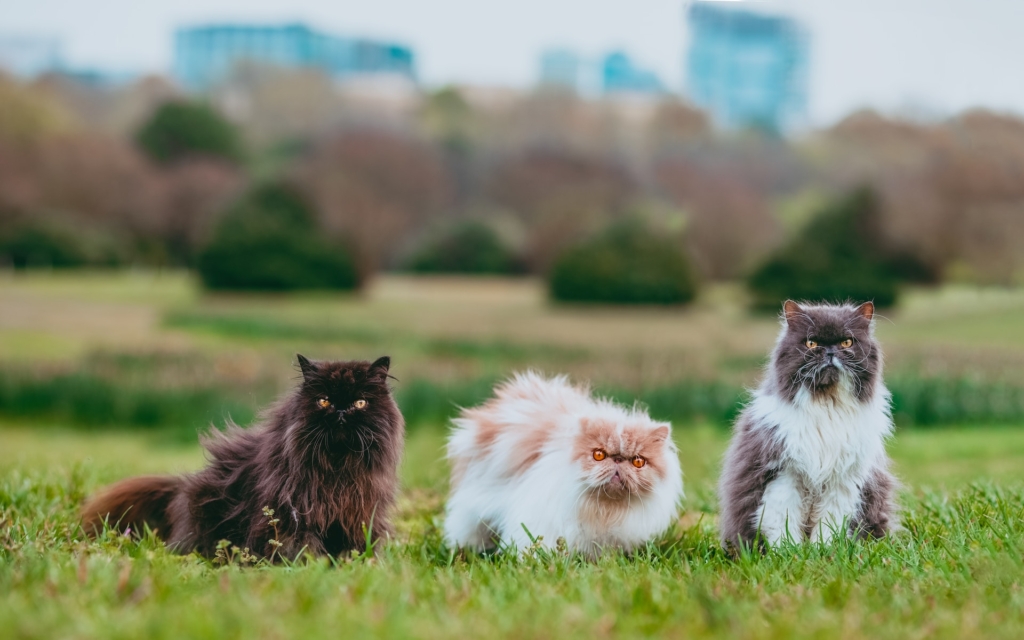
Persian Cat Price in Australia:
In Australia, Persian cat prices can range from AUD $500 to AUD $2,500, with some show-quality Persian cats costing even more. The price can also vary depending on the breeder, location, and age of the cat.
Persian Kittens Price In India
The price of Persian cat kittens in India can range from INR 10,000 to INR 30,000, depending on the breeder, location, and age of the kitten. Show-quality and rare Persian cat kittens can cost even more.
Persian Cat Different Varieties Prices
Persian cats come in a variety of colors and patterns, including solid colors, bi-color, tabby, and more. The price of Persian cats can vary widely depending on the variety, breeder, location, and age. Show-quality and rare varieties may cost more. In India, the price of a Persian cat can range from INR 15,000 to INR 90,000 or more.
Blue Persian Cat Price
The Blue Persian cat is a rare and highly sought-after variety. The price of a Blue Persian cat may vary from breeder to breeder, but it can typically range from INR 15,000 to INR 50,000 or more in India.
Doll Face Persian Cat Price
Doll Face Persian cats are known for their sweet and friendly expression, and are highly popular among cat lovers. The price of a Doll Face Persian cat can vary depending on the breeder, location, and age of the cat. In India, the price can range from INR 18,000 to INR 60,000 or more.
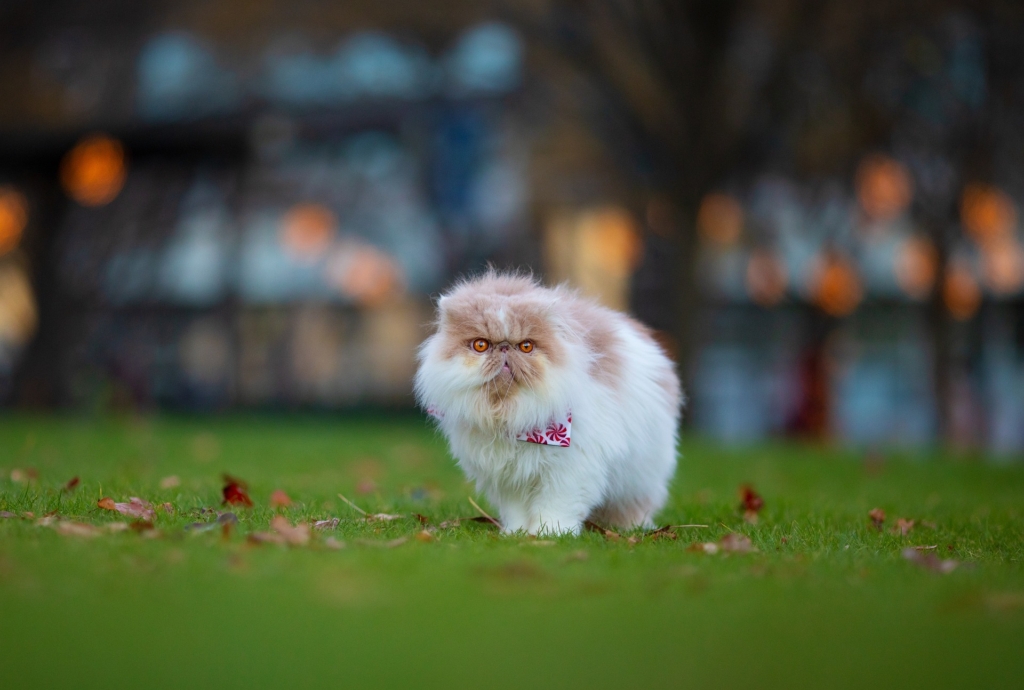
White Persian Cat Price
White Persian cats are a popular variety, known for their striking and elegant appearance. The price of a White Persian cat can vary depending on the breeder, location, and age of the cat. In India, the price can range from INR 55,000 to INR 90,000 or more.
Golden Persian Cat Price In India
The Golden Persian cat is a rare and highly prized variety. The price of a Golden Persian cat can vary depending on the breeder, location, and age of the cat. In India, the price can range from INR 45,000 to INR 90,000 or more.
Grey Persian Cat Price
Grey Persian cats are known for their gentle and affectionate temperament. The price of a Grey Persian cat can vary depending on the breeder, location, and age of the cat. In India, the price can range from INR 35,000 to INR 80,000 or more.
Black Persian Cat Price
Black Persian cats are known for their sleek and elegant appearance. The price of a Black Persian cat can vary depending on the breeder, location, and age of the cat. In India, the price can range from INR 25,000 to INR 60,000 or more.
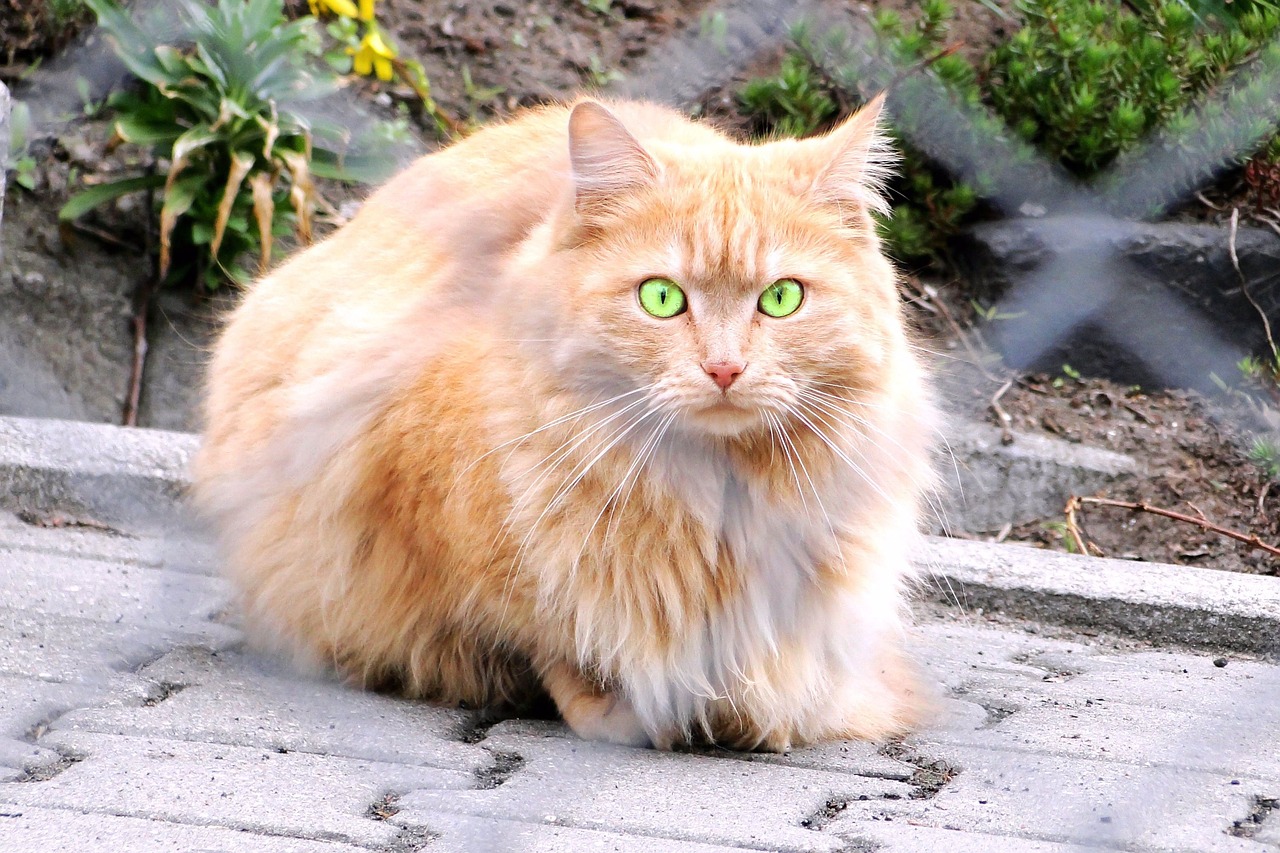
Persian Cats Prices In Major Indian Cities
Here are different breeds of Persian Cat Prices In Major Indian Cities:
| Persian Cat Price List India | |
|---|---|
| Different Locations | Persian Cat Prices |
| Persian Cat Price In Bangalore | ₹30,000 to ₹60,000 |
| Persian Cat Price In Mumbai | ₹34,000 to ₹80,000 |
| Persian Cat Price In Chennai | ₹40,000 to ₹70,000 |
| Persian Cat Price In Delhi | ₹45,000 to ₹90,000 |
| Persian Cat Price In Kolkata | ₹35,000 to ₹85,000 |
| Persian Cat Price In Kerala | ₹30,000 to ₹80,000 |
| Persian Cat Price In Lucknow | ₹35,000 to ₹70,000 |
| Persian Cat Price In Hyderabad | ₹38,000 to ₹65,000 |
| Persian Cat Price In Pune | ₹40,000 to ₹60,000 |
| Persian Cat Price In Bhopal | ₹35,000 to ₹65,000 |
| Persian Cat Price In Jaipur | ₹32,000 to ₹55,000 |
| Persian Cat Price In Kochi | ₹28,000 to ₹60,000 |
| Persian Cat Price In Ahmedabad | ₹30,000 to ₹55,000 |
| Persian Cat Price In Guwahati | ₹35,000 to ₹70,000 |
| Persian Cat Price In Patna | ₹38,000 to ₹80,000 |
| Persian Cat Price In Goa | ₹32,000 to ₹70,000 |
| Persian Cat Price In Kanpur | ₹30,000 to ₹75,000 |
| Persian Cat Price In Tamilnadu | ₹28,000 to ₹80,000 |
| Persian Cat Price In Coimbatore | ₹30,000 to ₹50,000 |
| Persian Cat Price In Dehradun | ₹30,000 to ₹60,000 |
| Persian Cat Price In Mysore | ₹35,000 to ₹70,000 |
| Persian Cat Price In Chandigarh | ₹30,000 to ₹60,000 |
| Persian Cat Price In Indore | ₹25,000 to ₹65,000 |
| Persian Cat Price In Mumbai Crawford Market | ₹28,000 to ₹75,000 |
| Persian Cat Price In India Olx | ₹35,000 to ₹80,000 |
| Persian Cat Vaccination Price | ₹30,000 to ₹60,000 |
| Persian Cat Vaccination Price In India | ₹35,000 to ₹50,000 |
| Punch Face Persian Cat Price In India | ₹40,000 to ₹90,000 |
| Semi Punch Persian Cat Price | ₹30,000 to ₹90,000 |
| Persian Cat Punch Face Price | ₹35,000 to ₹80,000 |
| Baby Persian Cat Price In India | ₹38,000 to ₹60,000 |
| Calico Persian Cat Price | ₹40,000 to ₹70,000 |
| Persian Cat Baby Price In Kerala | ₹42,000 to ₹80,000 |
| Persian Cat Black Price In India | ₹33,000 to ₹45,000 |
| Persian Cat Blue Eyes Price | ₹32,000 to ₹70,000 |
| Persian Cat Kitten Price | ₹25,000 to ₹55,000 |
Persian Cat Price In Delhi
Persian Cat Price In Delhi is typically between INR 15,000 to INR 30,000 depending on the breeder and the quality of the cat. However, some breeders may charge higher prices for show-quality cats or rare color varieties.
Persian Cat Price In Kerala
In Kerala, the price of a Persian cat can range from INR 10,000 to INR 35,000 depending on the breeder and the quality of the cat. Show-quality cats or rare color varieties may be priced higher. It’s important to do research and find a reputable breeder to ensure the health and well-being of your new furry friend.
Persian Cat Price in Bangalore
The price of a Persian cat in Bangalore can vary depending on various factors, such as the cat’s age, gender, coat colour, pedigree, and the breeder’s reputation. On average, you can expect to pay anywhere between ₹20,000 to ₹40,000 for a Persian cat in Bangalore.

Factors that Affect the Price of Persian Cat
The price of a Persian cat can vary depending on various factors such as the breeder’s reputation, the cat’s lineage, its color and coat type, and its age. Show-quality cats or rare color varieties can be priced higher.
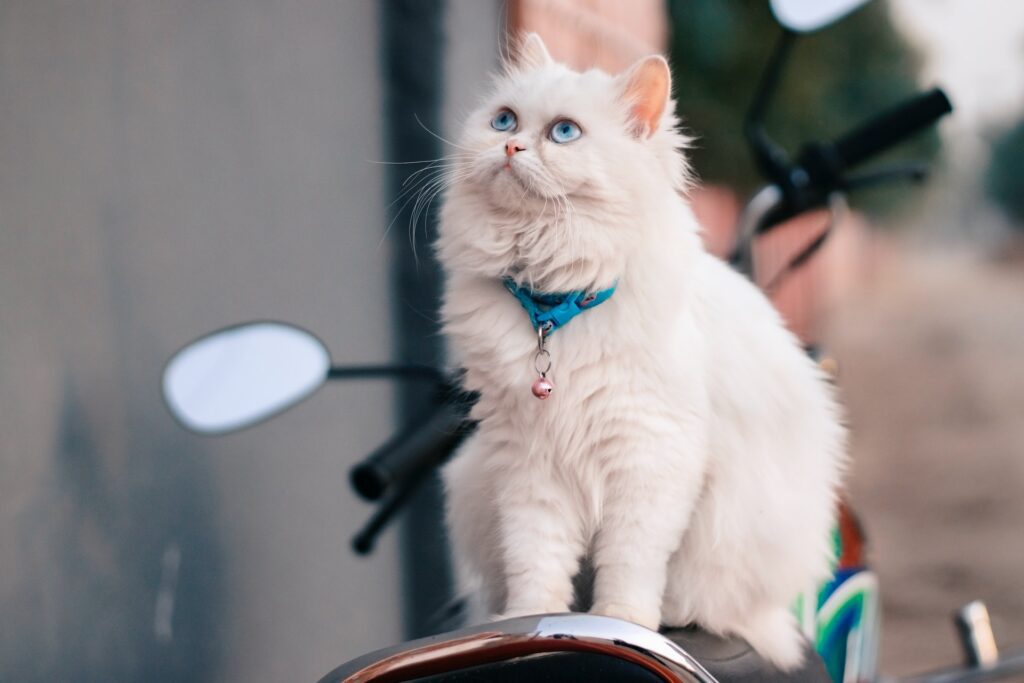
Monthly Maintenance Cost of Persian Cats:
Persian cats require regular grooming to maintain their long, luxurious coat. They also need proper nutrition, regular veterinary checkups, and a clean living environment. The monthly maintenance cost of a Persian cat can range from INR 1,000 to INR 3,000 depending on the quality of the cat’s food, grooming products, and veterinary care.
Availability of Persian Cats in India:
Persian cats are a popular breed in India, and they can be found in many cities. However, availability may vary depending on the region, the season, and the breeder’s inventory.
Persian Cat price comparison:
It’s essential to compare prices before purchasing a Persian cat to ensure you are getting a fair deal. Prices can vary depending on the breeder, location, and quality of the cat. You can also check online marketplaces or local classifieds to get an idea of the prevailing prices.
How to negotiate the price of Persian Cat:
If you are interested in purchasing a Persian cat, it’s always a good idea to negotiate the price with the breeder. You can do your research, compare prices, and be willing to walk away if the price is not reasonable. However, always be respectful and professional in your negotiations.

The true cost of owning a Persian Cats:
Owning a Persian cat involves more than just the purchase price. There are ongoing costs such as food, grooming, veterinary care, and accessories. It’s important to factor in these costs when considering the true cost of owning a Persian cat. However, the love and companionship they provide are priceless.
Facts about Persian Cats
Persian cats are one of the oldest cat breeds, originating from Persia (modern-day Iran). Here are some interesting facts about these beloved felines:
- Persian cats are known for their luxurious, long hair, which requires regular grooming to prevent matting and tangling.
- They are typically calm and gentle in nature, making them great companions for those looking for a laid-back pet.
- Persian cats come in a variety of colors and patterns, including white, black, cream, silver, and calico.
- Their flat faces and round eyes are a hallmark of the breed, although this feature can cause respiratory and eye problems in some cats.
- Persians are not known for their athleticism and prefer to lounge around indoors rather than engage in high-energy activities.
- These cats are quite adaptable and can thrive in a variety of living situations, from small apartments to larger homes.
- Persians are affectionate pets that love to cuddle with their owners and enjoy attention and affection.
- They are prone to certain health issues, including kidney disease, dental problems, and respiratory issues, so regular veterinary checkups are important.
- Persian cats have been featured in movies and TV shows, including the classic Disney movie “The Aristocats.”
- The Persian cat has remained one of the most popular cat breeds for over a century, thanks to its sweet disposition and beautiful appearance.

Pros and Cons of Persian Cats
There are Several Pros and Cons of Persian Cats, Such as:
| Pros | Cons |
|---|---|
| 1. Affectionate and loyal. | 1. Require regular grooming to prevent matting. |
| 2. Calm and laid-back | 2. Prone to health issues like respiratory problems. |
| 3. Great indoor companion. | 3. Expensive to purchase and maintain. |
| 4. Easy to train and housebreak. | 4. May have difficulty breathing due to their flat faces. |
| 5. Low exercise requirements. | 5. Can be high maintenance due to their long hair. |
| 6. Good with children and other pets. | 6. May be prone to behavior problems if not properly socialized. |
| 7. Can live up to 15 years. | 7. May have difficulty adjusting to new environments. |
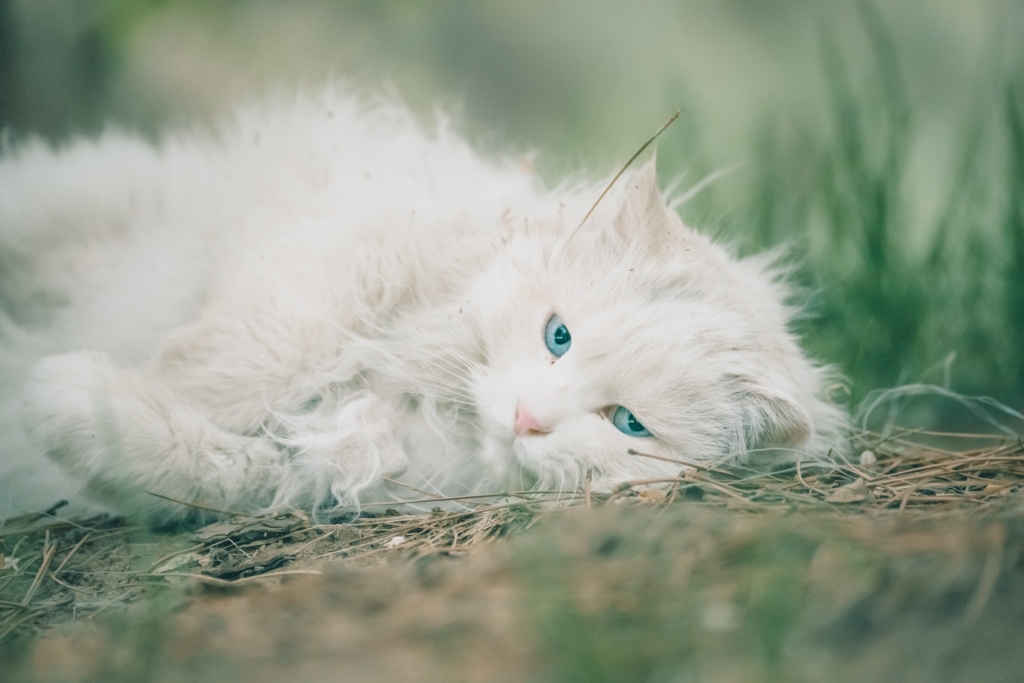
Persian Cat Training Guide
Persian cats are intelligent and trainable pets, but like any other cat, they require proper training and care to thrive. Here are some tips for training and caring for your Persian cat.
- Start early: Begin training your Persian cat while they are still young to establish good behaviour and habits.
- Positive reinforcement: Use positive reinforcement techniques such as treats and praise to reward good behaviour.
- Litter training: Teach your Persian cat to use the litter box early on and consistently reinforce the behaviour.
- Socialization: Socialize your Persian cat with people and other animals to prevent fear or aggression towards strangers.
- Basic commands: Teach your Persian cat basic commands such as “sit,” “stay,” and “come” using positive reinforcement.
Care Tips for Persian Cats
Here are some common Care Tips for Persian Cats, must add them to your cats daily routine:
- Grooming: Regular grooming is essential for Persian cats due to their long, luxurious fur. Brush their coat at least once a day to prevent matting and reduce shedding.
- Eye Care: Persians are prone to tear staining. Gently clean their eyes daily with a damp cloth to prevent unsightly stains and keep their eyes healthy.
- Dental Hygiene: Brush your Persian cat’s teeth regularly to prevent dental issues. Use a cat-friendly toothbrush and toothpaste to maintain good oral hygiene.
- Nutritious Diet: Provide a balanced and high-quality diet to support their coat health and overall well-being. Consult your veterinarian for recommendations on the best cat food for Persians.
- Hydration: Ensure your Persian cat stays well-hydrated by providing fresh water at all times. Some Persian cats may prefer a cat water fountain to encourage drinking.
- Litter Box Maintenance: Keep the litter box clean by scooping it daily. Persians are known for their meticulous grooming habits, and a clean litter box is essential for their hygiene.
- Regular Vet Check-ups: Schedule regular veterinary visits to monitor your cat’s health. Regular check-ups can help catch any potential issues early on.
- Indoor Living: Persian cats are best kept indoors to protect their luxurious coat from dirt and parasites. Create a safe and stimulating indoor environment with toys and scratching posts.
- Temperature Control: Persians are sensitive to extreme temperatures. Keep your home at a comfortable temperature to ensure they are not too hot or too cold.
- Social Interaction: Spend quality time with your Persian cat to provide social stimulation. These cats often enjoy lounging, but they also appreciate interactive playtime.
- Scratching Posts: Provide multiple scratching posts to satisfy their natural urge to scratch and to prevent damage to furniture. Consider posts covered in sisal or carpet for their scratching pleasure.
- Hairball Prevention: Due to their long fur, Persians are prone to hairballs. Help prevent them by incorporating hairball remedies or special cat treats into their diet.
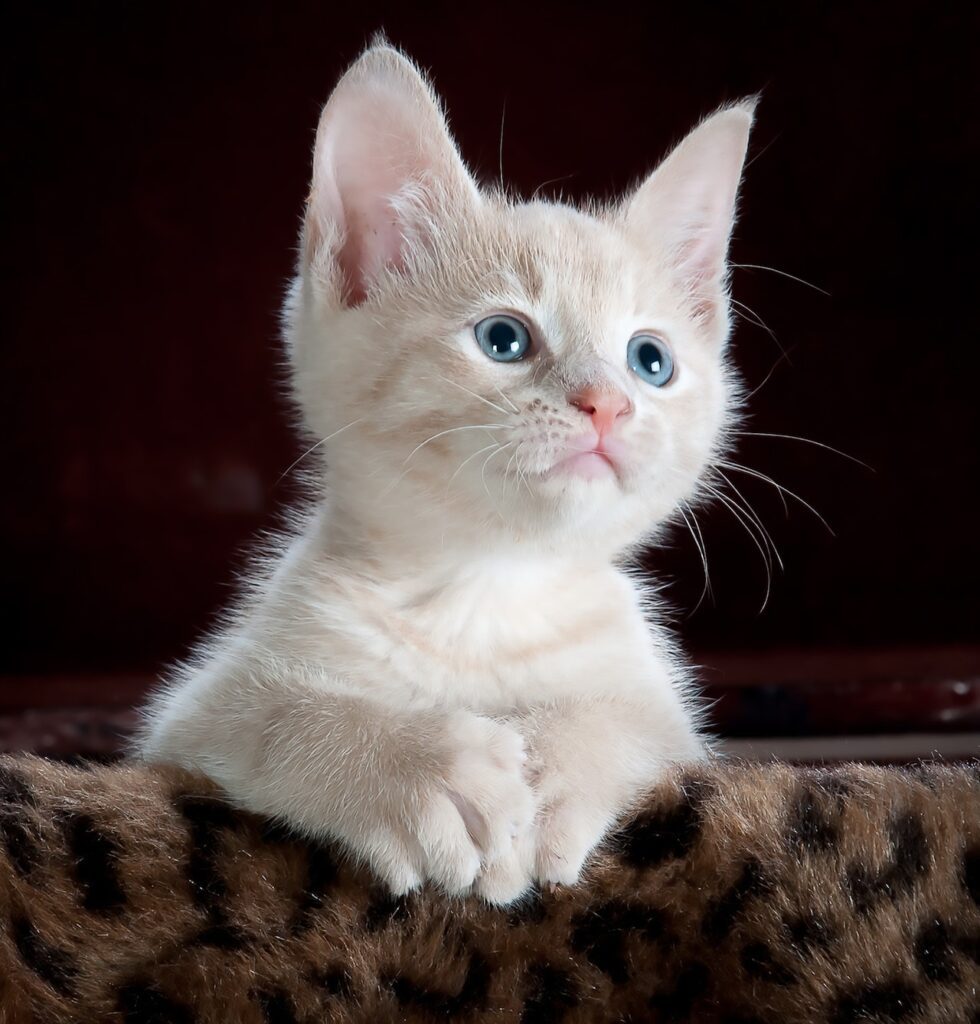
Health Issues of Persian Cat
Persian cats are known for their distinct appearance and friendly personalities, but like any breed, they can be prone to certain health issues. It’s important for Persian cat owners to be aware of these potential concerns and take preventive measures. Here’s a list of common health issues associated with Persian cats:
- Respiratory Problems: Persians are brachycephalic, meaning they have flat faces, which can lead to respiratory issues. Watch for signs of breathing difficulties, sneezing, or nasal discharge.
- Dental Issues: Due to their facial structure, Persians may be prone to dental problems. Regular dental care, including tooth brushing, can help prevent issues like gingivitis and tooth decay.
- Eye Conditions: Persians are susceptible to eye conditions such as cherry eye, entropion (inward rolling of the eyelids), and excessive tearing. Regular eye cleaning and veterinary check-ups are crucial for maintaining eye health.
- Polycystic Kidney Disease (PKD): This genetic condition is more common in Persian cats. Regular screening and early detection can help manage the progression of the disease.
- Obesity: Persians may be prone to obesity, especially if they lead a sedentary lifestyle. Provide a balanced diet and engage in interactive play to keep them active.
- Urinary Tract Issues: Some Persians are predisposed to urinary tract problems, such as blockages or infections. Ensure they have access to fresh water and monitor litter box habits for any signs of distress.
- Allergies: Persians can be prone to allergies, including skin allergies and respiratory allergies. Monitor for symptoms such as excessive scratching, skin redness, or sneezing.
- Heat Sensitivity: Due to their long fur, Persians may be sensitive to heat. Ensure they have a cool and well-ventilated environment, especially in warmer climates.
- Grooming Challenges: The luxurious coat of Persian cats requires regular grooming to prevent matting and hairballs. Neglecting grooming can lead to skin issues and discomfort.
- Hypertrophic Cardiomyopathy (HCM): This is a common heart condition in cats, including Persians. Regular veterinary check-ups can help monitor heart health and detect any issues early.
- Joint Issues: Some Persians may be prone to joint problems, such as osteoarthritis. Providing a comfortable and supportive environment can help manage these issues.

Persian Cat Mating Age
Persian cats typically reach mating age between 5 to 8 months. However, responsible breeders often wait until the cat is at least one year old before considering breeding. If you’re not an experienced breeder, it’s advisable to spay or neuter your Persian cat to prevent unintended litters. Consult with a veterinarian for guidance on the best timing based on your cat’s individual needs.
Persian Cat Lifespan
The average lifespan of a Persian cat is typically between 12 to 16 years. With proper care, a healthy diet, regular veterinary check-ups, and a safe indoor environment, some Persians can even live beyond 16 years. Providing excellent grooming, managing potential health issues, and offering a loving and supportive home can contribute to a longer and healthier life for your Persian cat.
Food for Persian Cats
Here are some common Food options for Persian Cats:
| Food Brand | Type of Food | Price Range |
|---|---|---|
| Royal Canin | Dry Food | $20 – $50 |
| Hill’s Science Diet | Wet Food | $30 – $60 |
| Purina Pro Plan | Dry Food | $15 – $40 |
| Blue Buffalo | Wet Food | $35 – $70 |
Names for Persian Cats
Recommended Names for Persian Cats:
| Name | Meaning |
|---|---|
| Simba | Lion |
| Bella | Beautiful |
| Oscar | God’s spear |
| Luna | Moon |
| Max | Greatest |
| Sophie | Wisdom |
| Charlie | Free man |
| Lucy | Light |
| Milo | Soldier |
Persian Cat care and Guide Video
Conclusion:
In conclusion, Persian cats are a popular breed known for their luxurious coats, sweet personalities, and easy-going nature. While they can be high-maintenance in terms of grooming and potential health issues, their affectionate and laid-back personalities make them a beloved pet for many. It is important to carefully consider the cost and responsibilities of owning a Persian cat before bringing one into your home, but with proper care and attention, they can make wonderful and rewarding companions.
Frequently Asked Questions on Persian Cats:
-
What is a Persian Cat?
A Persian cat is a long-haired breed of cat known for their distinct appearance, sweet temperament, and quiet disposition.
-
How much do Persian Cats cost in India?
The price of Persian cats in India varies depending on the location and the breeder. On average, a Persian cat can cost anywhere from Rs. 15,000 to Rs. 1,00,000.
-
What is the lifespan of a Persian Cat?
The average lifespan of a Persian cat is around 12-15 years. However, with proper care and attention, some Persian cats can live up to 20 years.
-
What kind of health issues do Persian Cats face?
Persian cats are prone to certain health issues like respiratory problems, eye infections, dental issues, and kidney disease.
-
What are some grooming tips for Persian Cats?
Persian cats require daily grooming to keep their long, thick coats from matting and tangling. Regular brushing, bathing, and trimming of the fur around the eyes and anus can help keep Persian cats clean and healthy.
-
Are Persian Cats good with children?
Persian cats are generally calm and gentle, making them a great choice for families with children.
-
What is the personality of a Persian Cat?
Persian cats are known for their sweet, laid-back personality. They enjoy lounging and are often content with just sitting and being petted.
-
Do Persian Cats shed a lot?
Yes, Persian cats shed a lot due to their long, thick coats. Regular grooming can help minimize shedding and keep their coats healthy and shiny.
-
Can Persian Cats live in apartments?
Yes, Persian cats can adapt well to apartment living as long as they are provided with enough space to move around, play, and exercise.
-
Do Persian Cats have any special dietary needs?
Persian cats have a tendency to become overweight, so it is important to feed them a balanced diet and monitor their food intake.
-
Can Persian Cats Drink Milk?
Well, milk is safe for Persian cats, it is not necessary in their diet. Some cats can be lactose intolerant, which can cause indigestion. If you want to give them milk, do so in moderation and make sure it is fresh and pasteurized.
-
How To Identify Persian Cat?
Persian cats are known for their long and fluffy fur, round faces, and short snouts. They come in different colours and patterns, but they all have a distinctive, elegant appearance.
Recommended –
- British Shorthair Cat | Price, Breed Profile❤️ Monthly Cost
- Himalayan Cats | Breed Profile ❤️, Price, Care Tips, Food
- Top 15 Hairless Cats Breed | Prices, Care Tips, Health Issues, Facts
- Orange Cats | Top 15 Breeds, Prices, Facts, Care Tips, Health
- Pocket Dog Price in India (Mar 2023) | Food, Care Tips, Training, Lifespan
- Bulldog price in India, USA, Uk (Mar 2023) | Everything about French bulldogs























